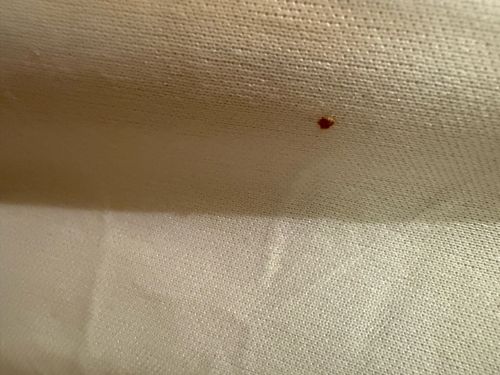Bed bug (most likely a blood spot from a crushed bed bug)
Scientific Name: Cimex lectularius
Order & Family: Hemiptera, Cimicidae
Size: Adults typically 4-5 mm (0.16-0.20 inches, if a bed bug it would be much smaller, the spot is about 1mm-2mm)

Natural Habitat
Dwellings where humans or other warm-blooded animals sleep, typically found in mattresses, bed frames, furniture, and cracks in walls.
Diet & Feeding
Exclusively blood of warm-blooded animals, primarily humans. They feed by piercing the skin with their proboscis.
Behavior Patterns
Nocturnal feeders, hiding in cracks and crevices during the day. They are attracted to carbon dioxide and body heat. They tend to live in groups.
Risks & Benefits
Risks: Bed bugs can cause itchy red welts on the skin due to bites. While not known to transmit diseases, their bites can lead to secondary skin infections from scratching. They can cause psychological distress, sleep deprivation, and significant financial burden due to extermination costs. Benefits: None known for humans or the ecosystem; they are considered pests.
Identified on: 11/20/2025